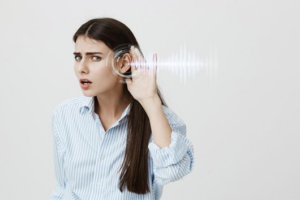
The gallbladder is a crucial body organ and is part of the biliary system. This pear-shaped organ is located under the liver and primarily serves as the reservoir for bile that plays a pivotal role in maintaining the digestive system of our body. Apart from facilitating the digestive process, bile also helps in eliminating the waste products from the body, in turn, assists the body in staying healthy.
While the gallbladder serves as the reservoir of bile, at times excessive deposition of bile or cholesterol or bilirubin may lead to the formation of gallstones. So, what are gallstones? Gallstone is one of the common gallbladder problems, which can be defined as crystallized clumps formed in the gallbladder or the bile duct that carries the bile to the small intestine. Gallstones vary in size from person to person depending on the intensity of the underlying health conditions.
Certain individuals might not experience any evident symptoms of gallstones. This condition is often referred to as “silent stones”. On the contrary, gallstones can be quite painful and cause inflammation that might persist for a prolonged duration. Surgical intervention to remove the gallbladder is the most common treatment method recommended by healthcare professionals.
While anyone can develop gallstones, women are more at risk. The changes in estrogen and progesterone hormones in women influences the chances of gallstones. Pregnancy or the consumption of oral contraceptives also alter the hormonal levels, ultimately leading to the formation of gallstones.
Symptoms
Now, let’s have a look at the key gallbladder stone symptoms.
Sudden Fluctuations in Body Weight
The significance of weight management can’t be undermined as maintaining a healthy weight is the key to overall health. The increase in body weight is quite common in today’s fast-paced city life and can be attributed to the lack of physical exercise and a sedentary lifestyle. The increased body weight and resultant obesity make one more prone to having gallstones. On the contrary, losing too much weight too suddenly can also act as a contributing factor for gallstones development. Thus, any instant fluctuations in body weight must not be ignored and medical consultations must be sought after to identify the underlying causes. This will help one flag issues related to gallbladder problems in the initial stages so that corrective treatment measures can be undertaken.
Nausea
The sensations of nausea are commonly associated with several health conditions, be it low blood pressure or dizziness or other complications. While we say that, it is also an indicator of gallstones. It is common for individuals to misinterpret gallbladder pain with problems of heartburn, stomach upset or even pain post-workout. However, if the symptoms of nausea and vomiting persist after consuming food, it is a clear sign of gallbladder stones. Persistent bouts of vomiting and unease call for immediate medical attention and at times for emergency care.
Jaundice
Jaundice is often associated with abnormal functioning of the liver and reveals signs such as yellowish skin, paleness in stool and darkening of urine colour. While jaundice is common in newborns and infants, jaundice in adults may indicate gallbladder stones. Jaundice occurs when the bile duct that carries bile to the small intestine is obstructed due to the deposition of excessive bile, bilirubin or cholesterol. If you are experiencing any signs of jaundice, wait no more and get a doctor’s consultation immediately.
Abdominal Pain
Abdominal pain, especially in women may point to several causes. Amongst the several causes, gallbladder stones could be one. Abdominal pain that is often accompanied by a meal that lasts for a couple of hours before going away automatically may indicate gallbladder problems or even the development of gallstones.
This pain medically referred to as biliary colic pain, is usually triggered by heavy meals as the gallbladder has to secrete more bile to digest the food. The intensity and frequency of this pain may indicate a chronic gallbladder problem. Thus, abdominal pain irrespective of its cause, intensity must be consulted. This will help doctors diagnose gallbladder problems at an early stage to facilitate measures for treatment and cure.
Pancreatitis
As we have already mentioned early in the article, the gallbladder is a part of the biliary system and resides in close proximity to the liver and pancreas. Thus, pancreatitis, a condition of inflammation in the pancreas may also indicate gallstones. Pancreatitis usually has complications such as nausea, vomiting, mild to chronic abdominal pain and occasionally fever or a higher heartbeat.
For further queries on gallbladder stones, do get in touch with the healthcare experts at Narayana Health, today!



